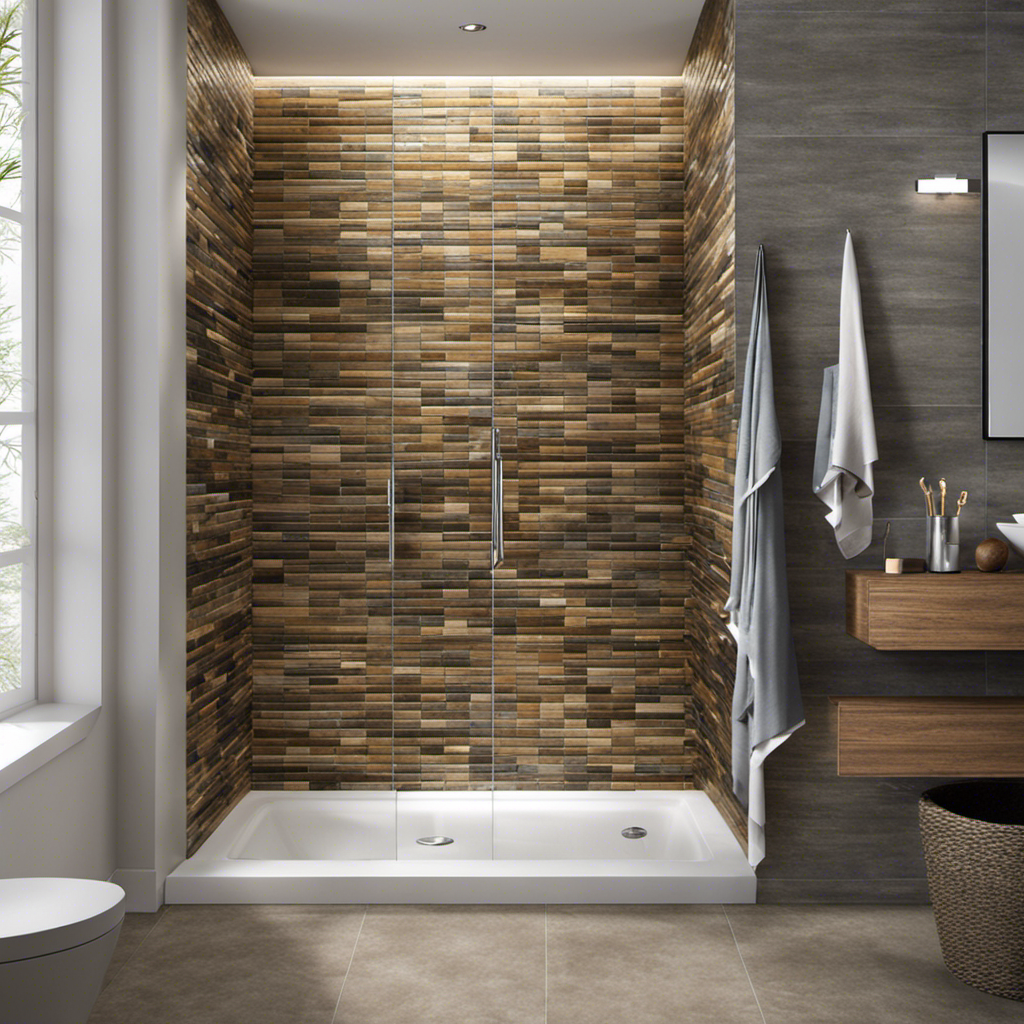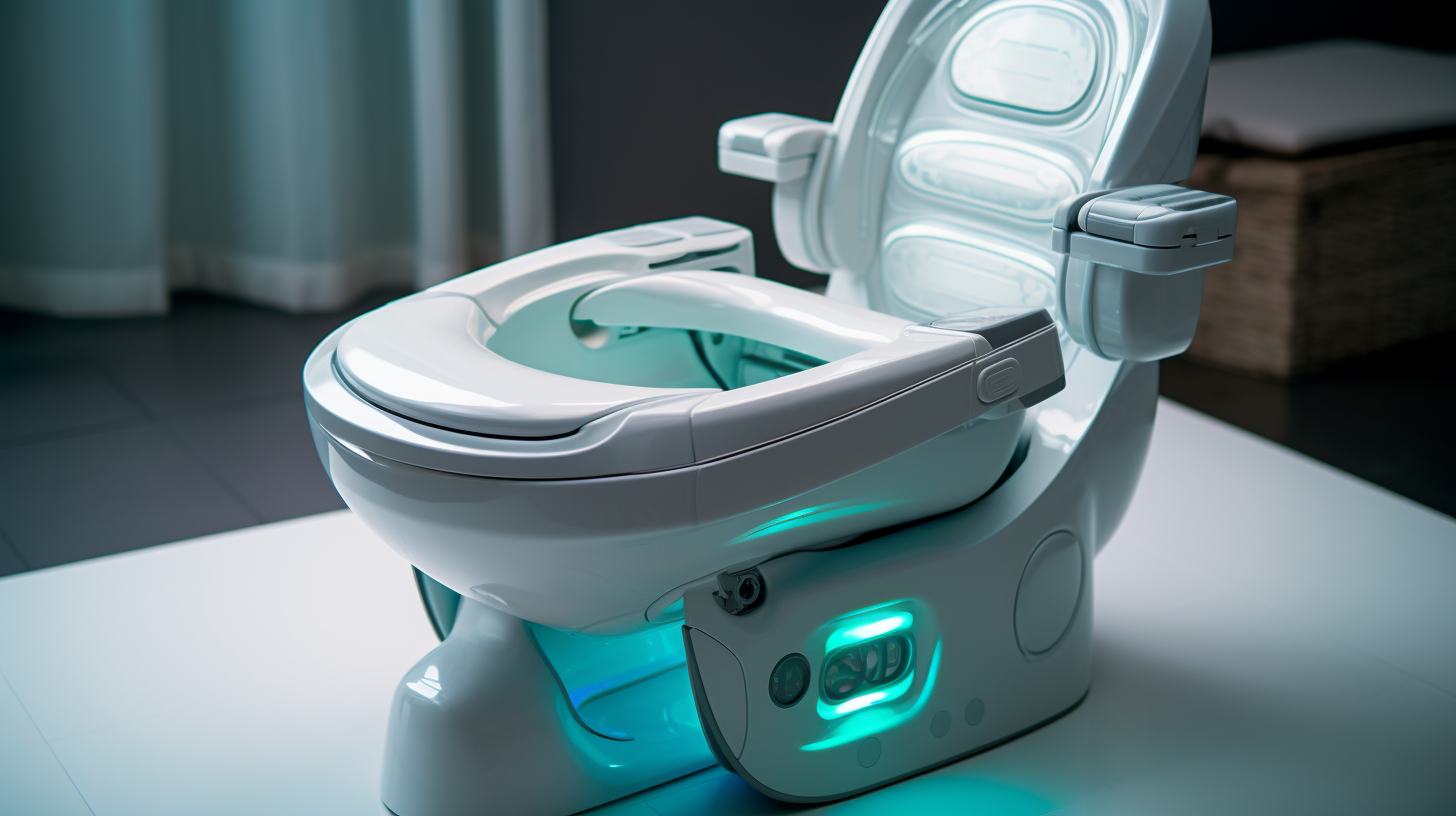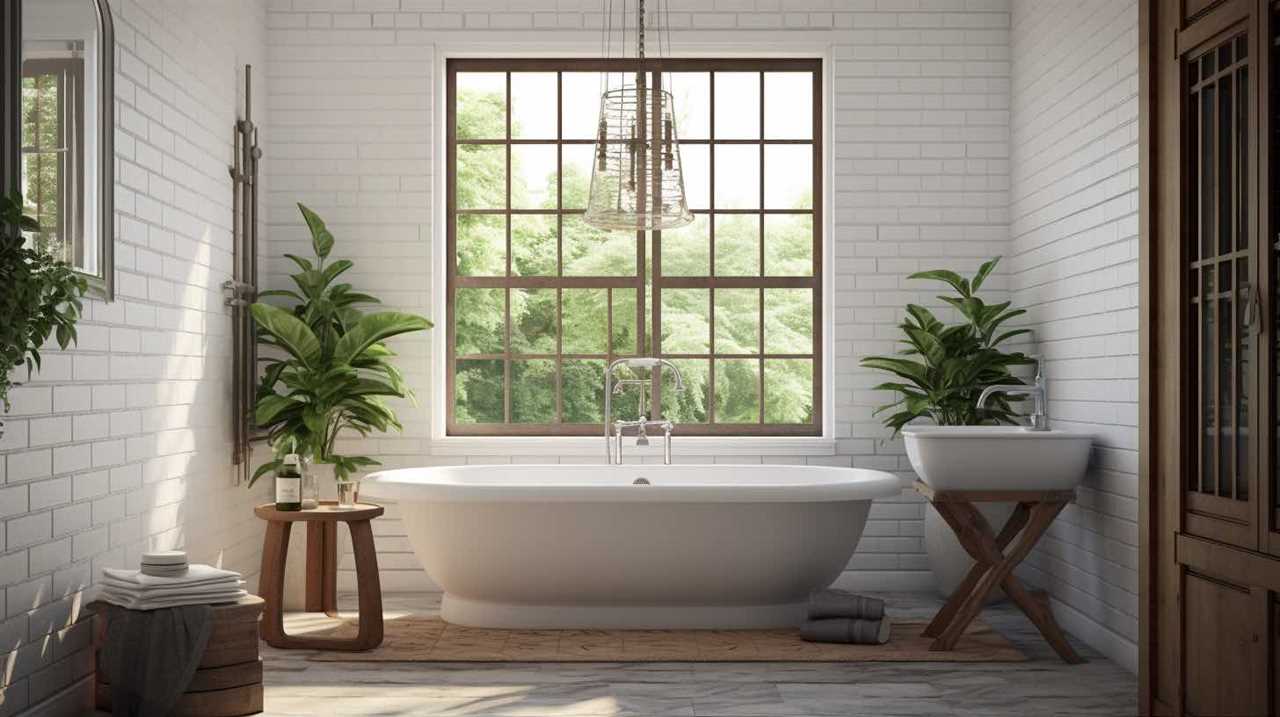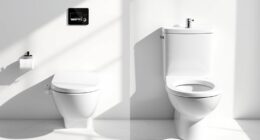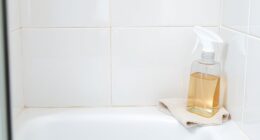Are you tired of dealing with outdated and worn-out bathroom tiles? Well, have you ever considered using peel and stick tiles in your shower? Trust us, it’s a game-changer!
With their easy installation and affordable price, these tiles are perfect for a quick and stylish bathroom makeover. But before you dive headfirst into this project, it’s important to know the pros, cons, and installation tips.
So, grab your tools and get ready to transform your shower into a stunning oasis with peel and stick tiles.
Key Takeaways
- Peel and stick tiles are moisture resistant but can seep water through the joints if left wet for a long time.
- Humid conditions in showers can lead to mold and wall damage when using peel and stick tiles.
- Drying the tiles after a shower and applying sealants can make them water resistant to some extent.
- It is generally not advisable to use peel and stick tiles in showers due to constant exposure to water.
Pros of Using Peel and Stick Tiles in Showers
Using peel and stick tiles in showers can be a convenient and cost-effective option for updating the look of your bathroom.
The advantages and benefits of using these tiles are numerous. Firstly, peel and stick tiles are easy to install, allowing you to transform your shower in a short amount of time.
Additionally, they are available in a wide variety of colors and designs, giving you the freedom to choose a style that suits your taste.
Furthermore, these tiles are resistant to moisture, making them durable and long-lasting in a wet environment like a shower.
Moreover, peel and stick tiles are affordable, saving you money compared to traditional tile installations.
Overall, the advantages and benefits of using peel and stick tiles in showers make them a practical choice for bathroom renovations.
Cons of Using Peel and Stick Tiles in Showers
To avoid potential issues, make sure to thoroughly dry the tiles and apply sealants after each shower.
While peel and stick tiles can be a convenient option for shower walls, there are some cons to consider.
One potential issue is the constant exposure to water, which can cause the adhesive to weaken over time. This can lead to tiles coming loose and creating gaps where water can seep through, potentially causing damage to the walls.
Additionally, maintenance requirements for peel and stick tiles in showers are higher compared to other options. Regularly inspecting for any loose or damaged tiles, as well as reapplying sealants periodically, is necessary to ensure the longevity and water resistance of the tiles.
Proper maintenance is key to avoiding any potential issues and ensuring the durability of your shower walls.
Tips for Installing Peel and Stick Tiles in Showers
Make sure you thoroughly clean the shower walls before installing, and don’t forget to let the tiles set for 48 hours to ensure strong adhesion.
To prepare your shower walls for peel and stick tile installation, follow these steps:
-
Clean the walls: Remove any existing dirt, grime, or soap scum from the walls using a mild cleaner and a scrub brush. Ensure that the walls are completely dry before proceeding.
-
Sand the walls (if necessary): If your walls are bumpy or uneven, use sandpaper to smooth them out. This will provide a flat surface for the tiles to adhere to.
-
Gather necessary tools: You will need scissors for cutting the tiles to fit, a wipe for cleaning up any excess adhesive, sealant (optional) for added water resistance, and a plywood sheet (if walls are bumpy) to create a smooth surface.
-
Install the tiles: Peel the backing off the tiles and stick them onto the walls, starting from the bottom and working your way up. Cut the tiles to fit around any fixtures or edges. Press firmly to ensure proper adhesion.
By following these steps and using the necessary tools, you can successfully install peel and stick tiles on your shower walls.
Enjoy your newly transformed shower!
Using Peel and Stick Tiles Over Existing Ceramic Tile in Shower Stall
You can achieve a seamless look in your shower stall by applying peel and stick tiles over existing ceramic tile.
To ensure proper adhesion, it is important to address any curved edges of the ceramic tiles that might hinder the peel and stick tiles from adhering properly. This can be done by using leveling compounds to level up the edges.
Additionally, applying an extra layer of adhesive as a primer before sticking the tiles can greatly improve adhesion.
By following these steps, you can revamp your shower stall with peel and stick tiles without the need for professional help.
Enjoy the new look of your shower stall, knowing that you have taken the necessary steps to ensure a durable and long-lasting installation.
Applying Peel and Stick Tiles on Ceramic Tiles in Showers
Achieving a seamless look in your shower stall is possible by applying peel and stick tiles directly on top of existing ceramic tiles. Here are some important tips to keep in mind when applying peel and stick tiles on ceramic tiles in showers:
- Thoroughly clean the ceramic tiles before installation to ensure proper adhesion.
- Level up any curved edges of the ceramic tiles using leveling compounds to create a smooth surface for the peel and stick tiles.
- Apply an extra layer of adhesive as a primer before sticking the tiles to enhance adhesion.
- Allow the tiles to set for 48 hours after installation to ensure a strong bond.
Using peel and stick tiles as an alternative shower wall covering is a cost-effective and easy way to revamp your shower stall. However, it is important to properly maintain these tiles to ensure their longevity. Regularly dry the tiles after each shower to prevent water seepage, and consider applying sealants to make them more water-resistant.
Is Peel and Stick Flooring Good for Shower and Bathroom Floors?
Peel and stick flooring can be a suitable option for shower and bathroom floors due to its waterproof properties and ease of installation. These tiles are designed to resist moisture, making them durable and long-lasting in wet environments.
Compared to traditional tile options, peel and stick tiles offer a convenient alternative. They are quick and easy to install, requiring no special tools or skills. Additionally, peel and stick tiles are more cost-effective and can be replaced or updated easily if needed.
However, it’s important to note that continuous exposure to water can reduce their lifespan. To maximize durability, it is recommended to dry the tiles after each use and apply sealant for added protection.
Overall, peel and stick flooring provides a practical and attractive solution for shower and bathroom floors.
Conclusion
In conclusion, while peel and stick tiles may seem like a convenient option for shower renovations, it is important to consider their limitations.
Constant exposure to water can lead to damage and mold growth, compromising the integrity of the walls. However, if you have existing ceramic tiles in your shower stall, peel and stick tiles can be a viable option with proper preparation and adhesion techniques.
When it comes to bathroom floors, it is recommended to use waterproof tiles to ensure longevity.
Ultimately, the choice between peel and stick tiles and traditional tiles depends on your budget and long-term goals for your bathroom.
